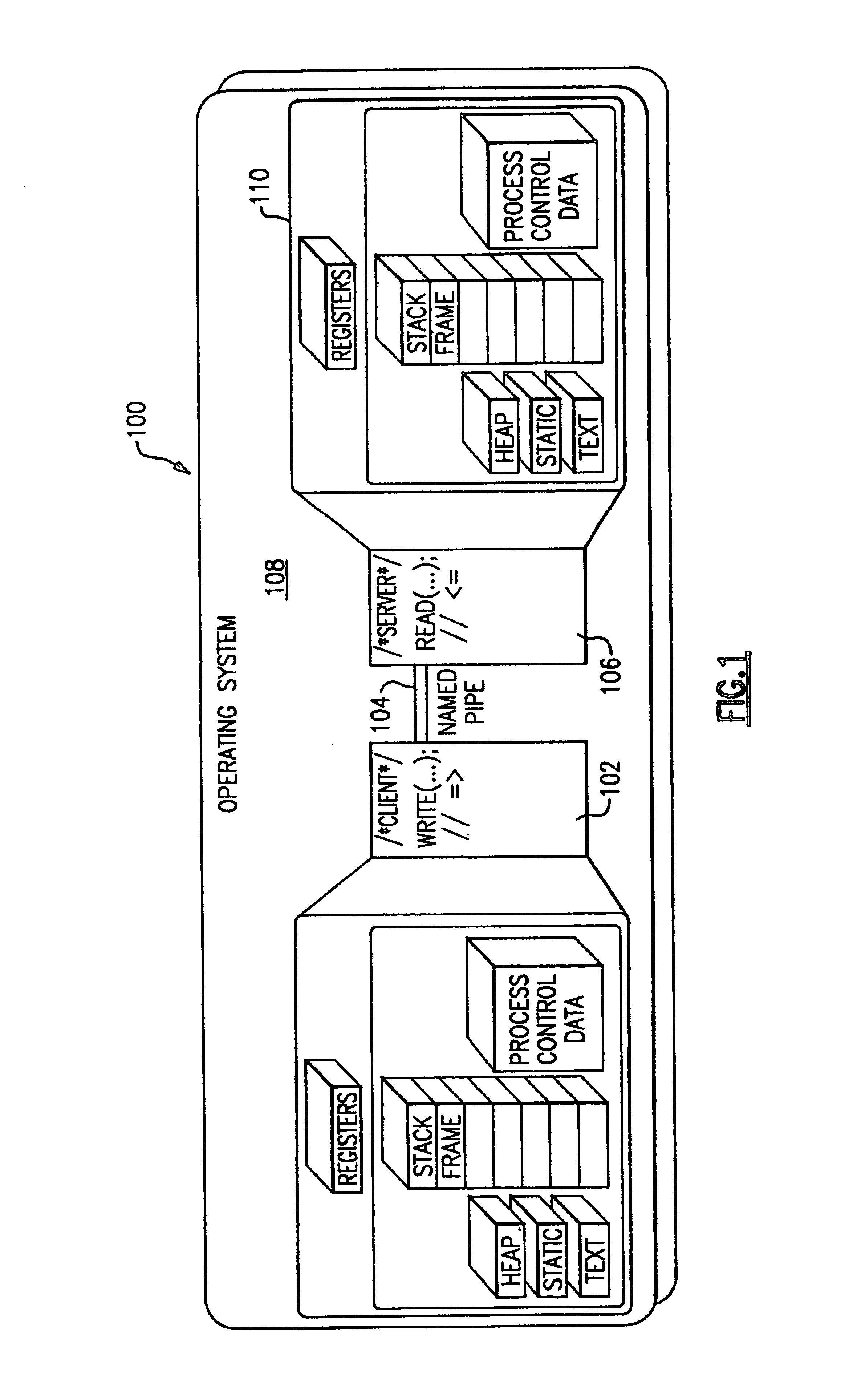Method, apparatus and program storage device for enabling the reading of data from a named pipe while minimizing the use of system resources
a program storage device and data pipe technology, applied in the direction of multi-programming arrangements, program control, instruments, etc., can solve the problems of preventing any new processes from being dispatched, backed against real resources, and system overhead costs that must be taken into account, so as to minimize the use of system resources
- Summary
- Abstract
- Description
- Claims
- Application Information
AI Technical Summary
Benefits of technology
Problems solved by technology
Method used
Image
Examples
Embodiment Construction
The present invention may be used in a system such as the system 200 shown in FIGS. 2A-2F, in which client processes 202 write to a named pipe 204 by issuing write( ) function calls to the operating system 208, while server processes 206 read from the same named pipe by issuing read( ) function calls to the operating system 208. System 200 may comprise any suitable computer system such as an IBM S / 390 server. Operating system 208 may in turn comprise any suitable operating system such as the IBM Transaction Processing Facility (TPF). The system 200 differs from the system 100 shown in FIG. 1 through the use of the activate_on_receipt( ) function call by the server processes 206 as well as the response to that function call by the operating system 208.
The activate_on_receipt( ) function call of the present invention is an extension of an existing C language API of the same name supported by the IBM Transaction Processing Facility (TPF) operating system. The existing function call, wh...
PUM
 Login to View More
Login to View More Abstract
Description
Claims
Application Information
 Login to View More
Login to View More - R&D
- Intellectual Property
- Life Sciences
- Materials
- Tech Scout
- Unparalleled Data Quality
- Higher Quality Content
- 60% Fewer Hallucinations
Browse by: Latest US Patents, China's latest patents, Technical Efficacy Thesaurus, Application Domain, Technology Topic, Popular Technical Reports.
© 2025 PatSnap. All rights reserved.Legal|Privacy policy|Modern Slavery Act Transparency Statement|Sitemap|About US| Contact US: help@patsnap.com



